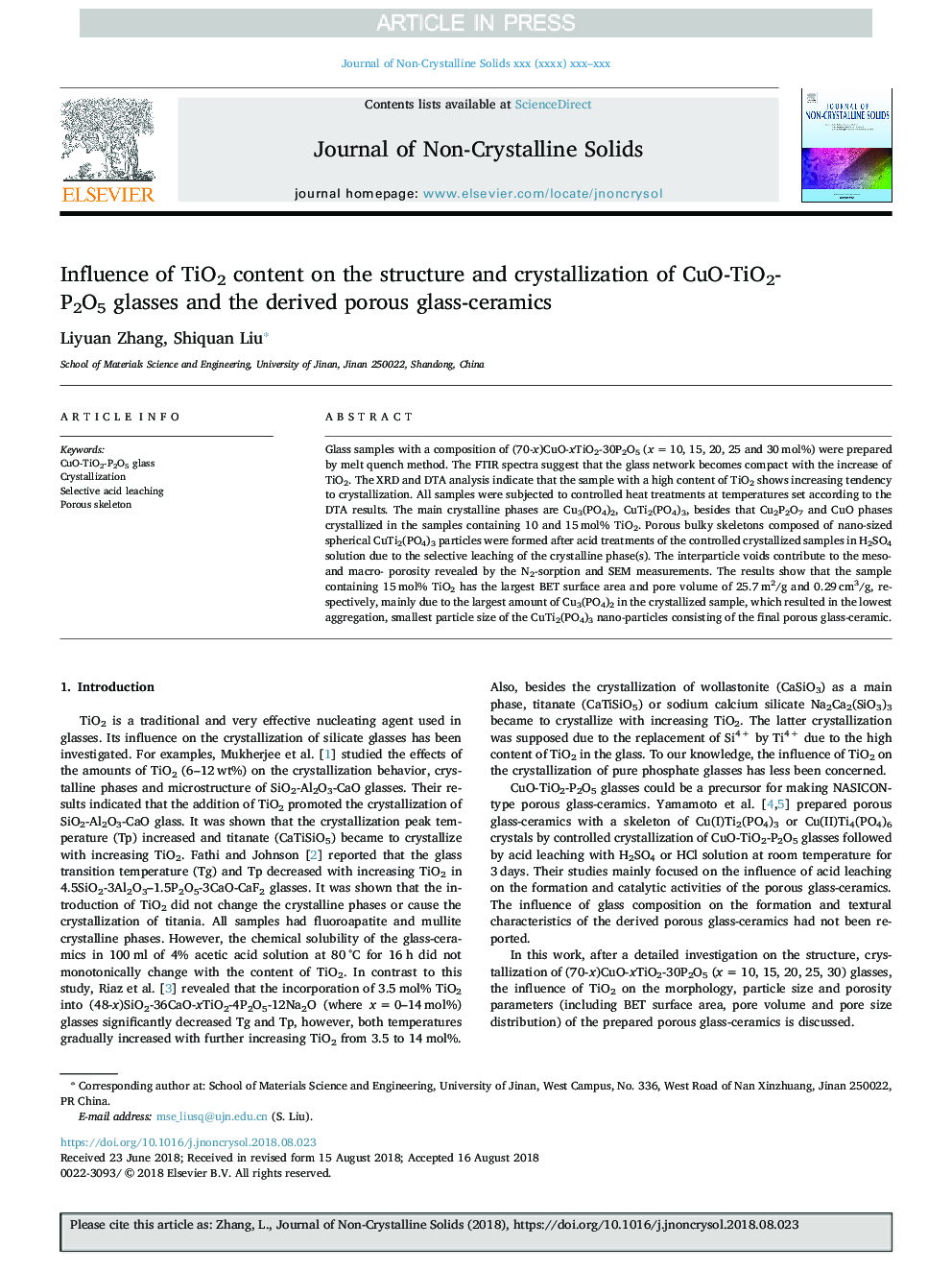| Article ID | Journal | Published Year | Pages | File Type |
|---|---|---|---|---|
| 10155565 | Journal of Non-Crystalline Solids | 2018 | 5 Pages |
Abstract
Glass samples with a composition of (70-x)CuO-xTiO2-30P2O5 (xâ¯=â¯10, 15, 20, 25 and 30â¯mol%) were prepared by melt quench method. The FTIR spectra suggest that the glass network becomes compact with the increase of TiO2. The XRD and DTA analysis indicate that the sample with a high content of TiO2 shows increasing tendency to crystallization. All samples were subjected to controlled heat treatments at temperatures set according to the DTA results. The main crystalline phases are Cu3(PO4)2, CuTi2(PO4)3, besides that Cu2P2O7 and CuO phases crystallized in the samples containing 10 and 15â¯mol% TiO2. Porous bulky skeletons composed of nano-sized spherical CuTi2(PO4)3 particles were formed after acid treatments of the controlled crystallized samples in H2SO4 solution due to the selective leaching of the crystalline phase(s). The interparticle voids contribute to the meso- and macro- porosity revealed by the N2-sorption and SEM measurements. The results show that the sample containing 15â¯mol% TiO2 has the largest BET surface area and pore volume of 25.7â¯m2/g and 0.29â¯cm3/g, respectively, mainly due to the largest amount of Cu3(PO4)2 in the crystallized sample, which resulted in the lowest aggregation, smallest particle size of the CuTi2(PO4)3 nano-particles consisting of the final porous glass-ceramic.
Keywords
Related Topics
Physical Sciences and Engineering
Materials Science
Ceramics and Composites
Authors
Liyuan Zhang, Shiquan Liu,
